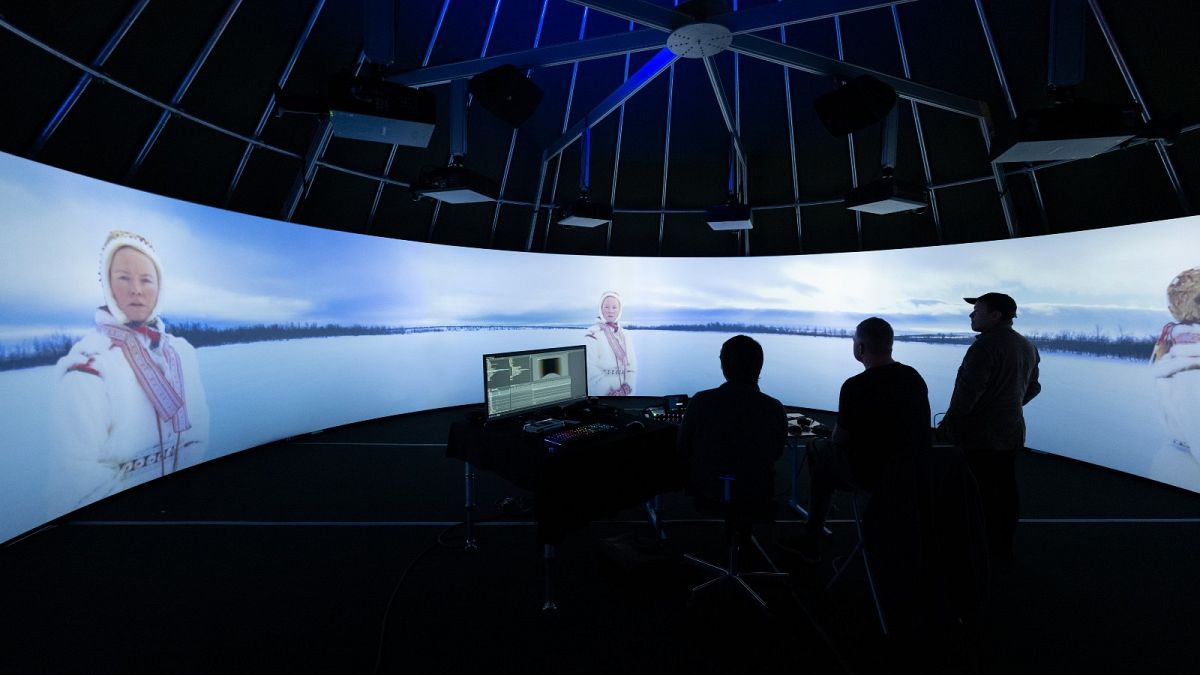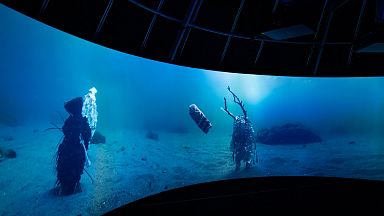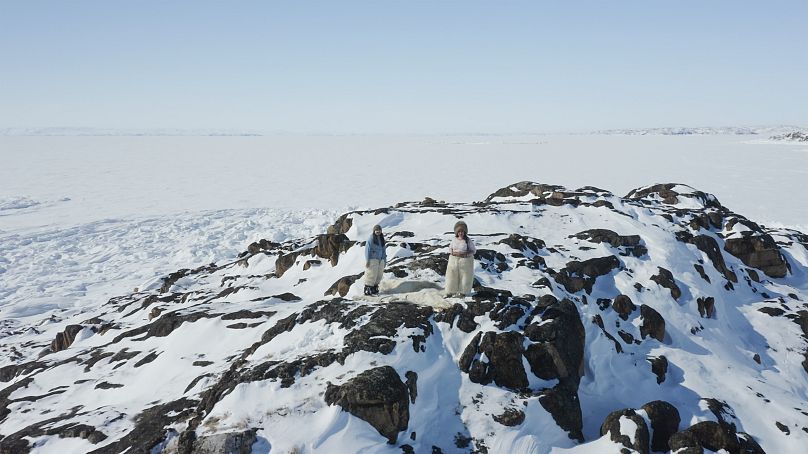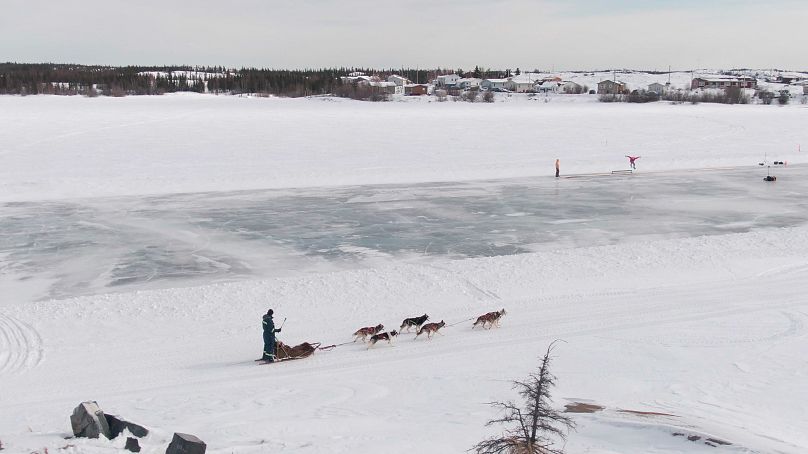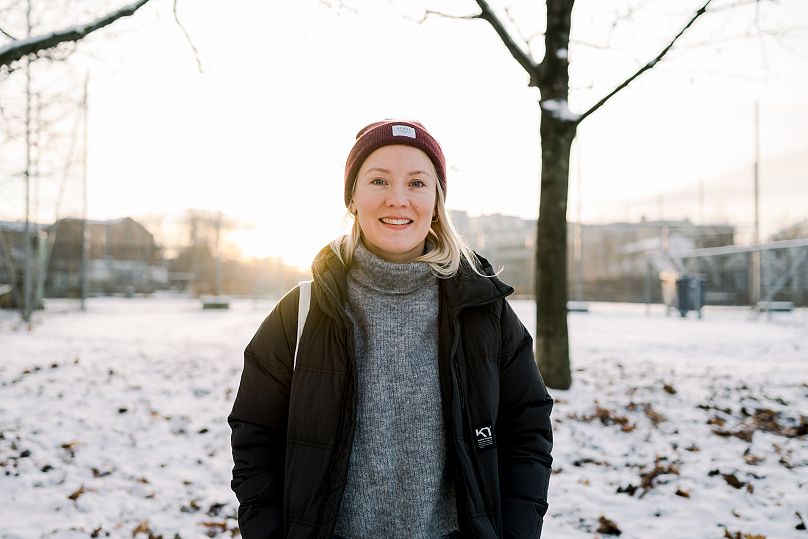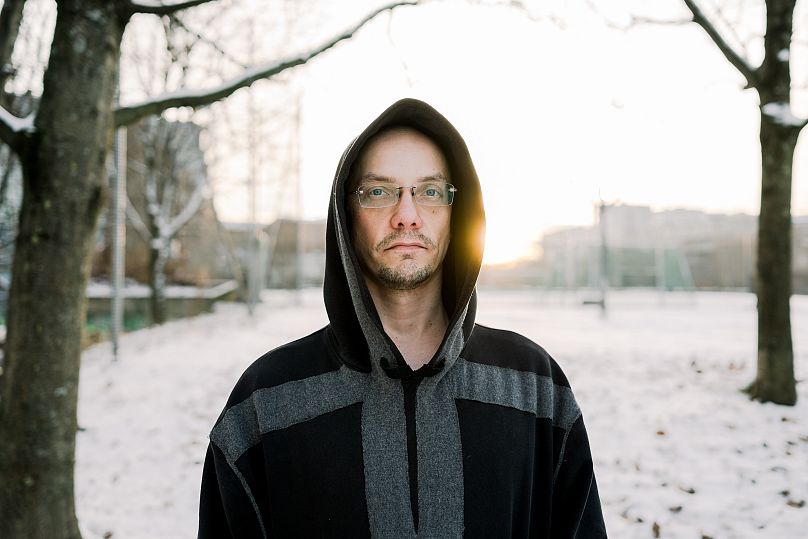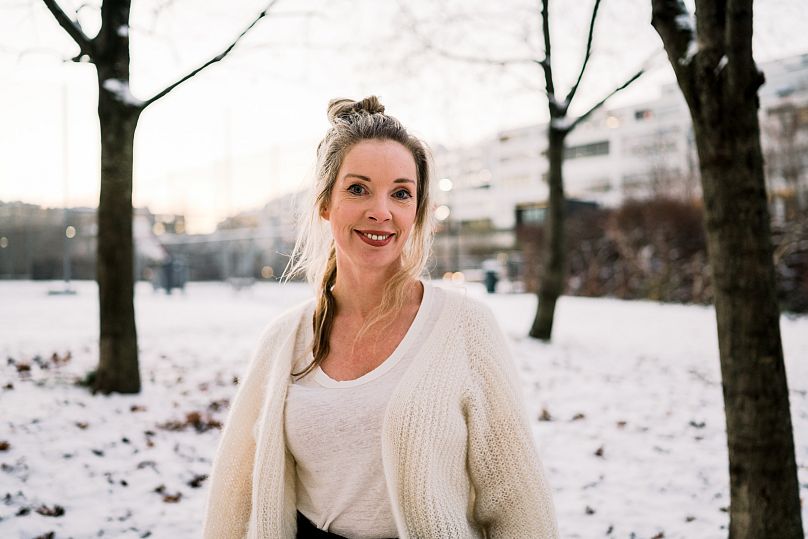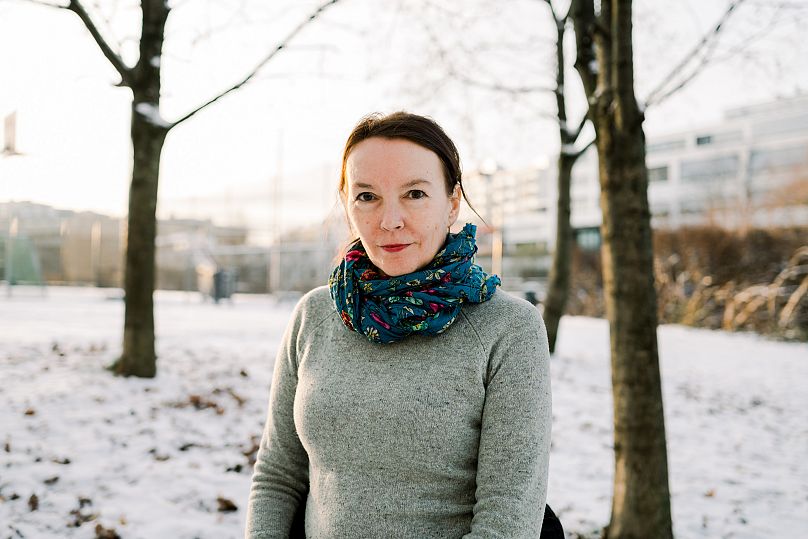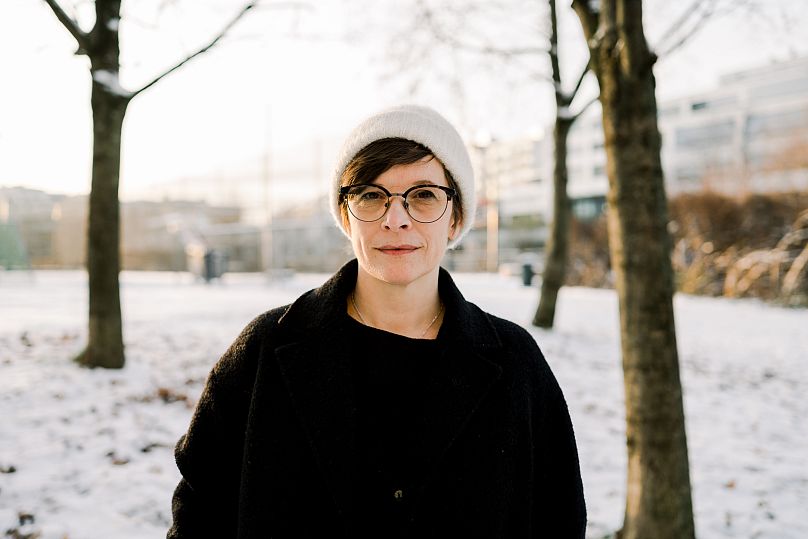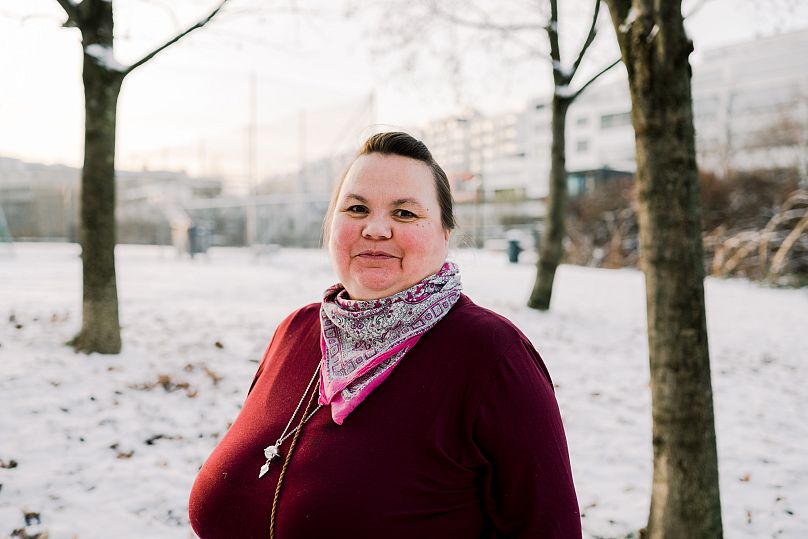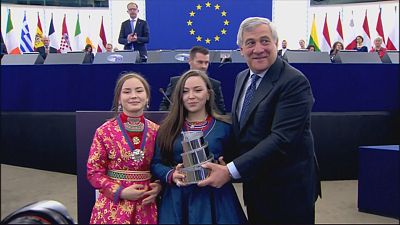Defending livelihoods, rights and lands - Europe's indigenous Sámi communities have long fought to be respected and recognised. Now the battle has a global showcase at the Venice Film Festival
This year’s Venice Biennale has seen an historic first: the transformation of the Nordic Pavilion into the “Sámi Pavilion”, celebrating the culture and sovereignty of the Indigenous Sámi people. Now, Sámi film is coming to the fore.
As part of the Sámi Pavilion’s extended programme, the ÁRRAN 360° film initiative brings six original works to Venice’s San Servolo island – and Sámi cinema to a global audience. Visitors have the chance to take a momentary (and likely welcome) escape from the summer heat and hectic crowds of Venice to the Arctic, and the heart of Sámi storytelling, with the 360-degree films screened in a monumental traditional Sámi tent known as a lávvu.
“With ÁRRAN 360°, we want to invite world audiences to experience the spirit of our circular storytelling and to embrace viewers with our soul-scapes and connection to land,” explains Anne Lajla Utsi, Director of International Sámi Film Institute (ISFI), which has realised the film programme in collaboration with Norwegian Film Institute (NFI) and Office for Contemporary Art Norway (OCA). “Árran is a Northern Sámi word to describe the hearth of a lávvu [...] around which our storytelling has taken place since time immemorial.”
Participating filmmaker and member of the Sámi Parliament of Norway, Siljá Somby, emphasises the bringing together of time-honoured tradition and technology: “There’s something very special about entering a space that is so familiar to the Sámi people, then meeting the hi-tech story that is offered within this space.”
The Sámi people’s ancestral lands (known as Sápmi) extend across large swathes of northern Norway, Sweden, Finland, and the Kola Peninsula in Russia. As with the broader programme of the Pavilion, ÁRRAN 360 highlights some of the most salient issues facing Sámi society: land and water governance, self-determination, and the struggle to maintain culture and traditional occupations such as reindeer herding in the face of ongoing colonialism, including what might be described as “spiritual colonialism”.
Following earlier Christianisation, governments in Norway, Sweden, Finland and Russia pursued aggressive assimilation policies from the 19th century until the 1960s, which variously involved the establishment of residential schools, the suppression of Sámi languages and removal of Sámi people from their lands; the Sámi Pavilion comes, aptly, at a critical juncture, with Truth and Reconciliation Commissions addressing Nordic colonialism underway in Norway and Finland, and in discussion in Sweden.
As well as such a pivotal moment of reckoning, ÁRRAN 360 comes at an exciting time for Sámi filmmaking and its global recognition – not least because Utsi was welcomed as a member of the Academy of Motion Picture Arts and Sciences in June this year. “The Sámi film industry is at a crossroad after 13 years since we established ISFI. Many big international film companies are showing interest in our stories now,” says Utsi. “It is an essential principle for us that we have Sámi creatives in the leading positions and that we are telling our own stories, contrary to history where everyone else has told our stories and often in stereotypical terms.”
Meet the filmmakers:
Elle Márjá Eira
Hailing from Guovdageaidnu (Kautokeino), on the Norwegian side of Sápmi, Elle Márjá Eira transports viewers to the heart of reindeer herding via a deeply personal film that follows her own family and their herd in reindeer grazing district 26 Lákkonjárga. “After a tough winter, due to a grazing crisis caused by major weather changes and climate change, I wanted to show a traditional and authentic side of reindeer husbandry,” says the filmmaker, whose film Girdnu (Reindeer Corral) conveys a moment of release after a season of struggle. “My family has also been on trial every year to defend our livelihoods, rights, and land. We are exhausted by all the struggles, but my heart always relaxes when the herd has survived another winter [...] Letting the herd wander north in their own rhythm according to their instinct is liberating.”
Hans Pieski
Based 300 miles above the Arctic Circle in Northern Finland, by the Tana River, videographer and photographer Hans Pieski takes traditional Sámi knowledge of the river system as a jumping-off point for his surreal video art piece Muohtačalmmit (Snowfall). A reflection on the immense power of water and humanity’s utter dependence on it (as a vehicle for movement, a life-giving force and something sacred), the film depicts the flow of water as a metaphor for the Sámi people under the pressure of modern times.
Ann Holmgren Aurebekk
“I think that imagination is one of the most important tools to find new ways out of inherited problems,” says Ann Holmgren Aurebekk, whose film Ovias traces the journey of a young woman into an ethereal, dreamlike plane to discover that our actions in this world (however small) have an impact in myriad other realms. “The theme is classic. Everything we do matters,” explains the Sámi-Swedish filmmaker, whose work often deals with existential questions. For Ovias, Holmgren Aurebekk worked together with her art collective, The Molecular Ballet, to create a dreamscape based on the Sámi concept of Saivo: a realm where the dead lead happy lives with their families and ancestors.
Marja Helander
Marja Helander’s film follows a Sámi sea-being known as an áfruvvá (the ghost of a person who died by drowning) as she emerges from the sea in search of warmth, only to find a world devoid of people. Instead, she must experience humanity solely through the exhibits of an abandoned museum and the debris people have left behind. In Áfruvvá (Mermaid), Helander juxtaposes the deserted museum, burnt-out van and fluttering plastic bags with the stark, majestic beauty of Jøkelfjord in a powerful reflection on the legacy of humanity and our relation to both the earth and other realms of life.
Liselotte Wajstedt
“What I can provide knowledge about is how we Sámi people treat nature. What is taken from nature is a gift and what is left must be returned,” says Stockholm-based, Kiruna-born multimedia artist Liselotte Wajstedt. Her film, Eadni (Mother), centres on the Háldi: a shape-shifting forest creature who lures children into the woods to become a part of nature’s fauna. “It is great to be able to tell a story from my childhood [...] and at the same time to be able to comment on how badly we humans in general treat nature,” Wajstedt says. “I ask myself the question: why does she want the children? Is she evil, selfish or just lonely?” The answer may be something more profound: a need to continue the eternal circle and essence of life, possible only when nature is conserved. “We must see nature: we must experience nature and in it see a soul. There we have the ability to change.”
Siljá Somby
Both a director and a member of the Sámi Parliament of Norway, at ÁRRAN 360 Siljá Somby presents Daate Dijjien: a spiritual journey beyond time and space, triggered by the confiscation of a sacred Sámi drum by a priest. “The removal of Sámi drums was a very traumatic time in Sámi history [...] in order to control over the Sámi population, the missionaries decided that they had to gain spiritual control over the people,” Somby reflects. “[The film] tells the fate of one drum [...] but of course it has a quite serious political undertone because there are so many Sámi drums that are still around,” she says, referring to the 70 (Somby’s estimation) or so drums in museums around the world. “Repatriation of the sacred drums is quite a hot topic at the moment, so I’m hoping my film can contribute to the discussions.”
ÁRRAN 360° runs from 26 August – 10 September 2022, on San Servolo Island, Venice. In addition to the six principal films, ÁRRAN 360° will present a selection of virtual and augmented realities. From 2 – 5 September, ARCTIC XR will also bring the work of six leading Indigenous artists from Canada to San Servolo.
